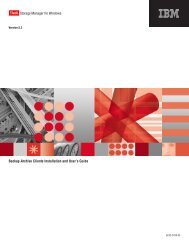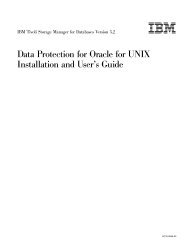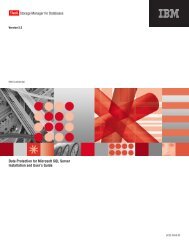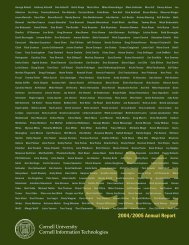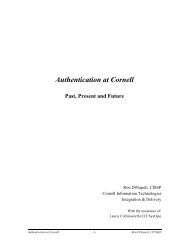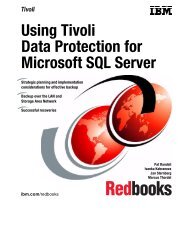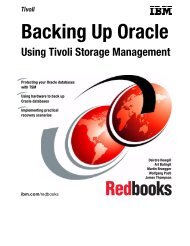Installation and User's Guide - Services and Support
Installation and User's Guide - Services and Support
Installation and User's Guide - Services and Support
Create successful ePaper yourself
Turn your PDF publications into a flip-book with our unique Google optimized e-Paper software.
IBM Confidential/EXCAPPlication=SRSUse the /excapplication parameter to specify the name of the SRS databasefrom which files will be restored. Specify SRS for the Site ReplicationService database files to be restored. If no value is specified, DataProtection for Exchange restores the Information Store database files./FROMEXCSERVer=server-nameUse the /fromexcserver parameter to specify the name of the ExchangeServer where the original backup was performed. The default is the localmachine name./INTO=pathnameUse the /into parameter to specify the root directory where files are to berestored. The restorefiles operation creates a subdirectory under the rootdirectory that contains the name of the storage group. Restored files areplaced in that subdirectory. If the /into parameter is not specified, the fileswill be restored into directory from which the restorefiles comm<strong>and</strong> isissued. For example, if Data Protection for Exchange is installed in thec:\Program Files\Tivoli\TSM\TDPExchange directory <strong>and</strong> the followingcomm<strong>and</strong> is issued from the E:\Somedir location: e:\Somedir>c:\″Program Files″\Tivoli\TSM\TDPExchange\tdpexcc restorefilesThirdSG full, then the files are restored to the subdirectories in thee:\Somdir location:e:\Somedir\ThirdSG\DB3_1.edbe:\Somedir\ThirdSG\DB3_1.stme:\Somedir\ThirdSG\E0200001.log/LOGFile=logfilenameUse the /logfile parameter to specify the name of the activity log filegenerated by Data Protection for Exchange.The logfilename variable identifies the name of the activity log file.If the specified log file does not exist, a new log file is created. If thespecified log file exists, new log entries are appended to the file. Thelogfilename variable can include a fully-qualified path. However, if no pathis specified, the log file is written to the Data Protection for Exchangeinstallation directory.If the logfilename variable includes spaces, the entire /logfile parameterentry must be placed in double quotes. For example:/LOGFile="c:\Program Files\mytdpexchange.log"If the /logfile parameter is not specified, log records are written to thedefault log file, tdpexc.log.The /logfile parameter cannot be turned off. You always get logging.When using multiple simultaneous instances of Data Protection forExchange to perform operations, use the /logfile parameter to specify adifferent log file for each instance used. This directs logging for eachinstance to a different log file <strong>and</strong> prevents interspersed log file records.Failure to specify a different log file for each instance can result inunreadable log files./LOGPrune=numdays|NoUse the /logprune parameter to disable log pruning or to explicitly requesta prune of the log for one comm<strong>and</strong> run. By default, log pruning isenabled <strong>and</strong> performed once per day. The numdays variable represents theChapter 5. Using the Comm<strong>and</strong> Line Interface 99



